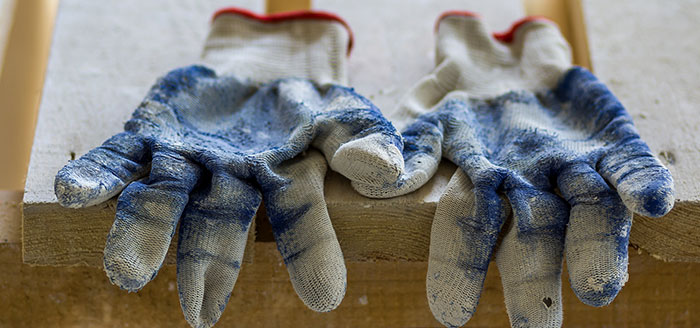Asbestos secondary exposure causes Mesothelioma Cancer just as primary exposure does.
The only known cause of Mesothelioma Cancer is exposure to asbestos fibers. Therefore, the majority of Mesothelioma cases are due to occupational asbestos direct exposure. “Any amount of asbestos exposure is considered dangerous, even for those who do not directly work with or come into contact with the toxin.” (Mesothelioma + Asbestos Awareness Center)
Due to the way secondary exposure to asbestos happens, it is the most serious health risk for women and children.
What is Asbestos?
Asbestos, “a fibrous mineral, either amphibole or chrysotile, formerly used for making incombustible or fireproof articles,” has been used in the United States for decades, and at one time could be found in many products.(Dictionary.com)
Some of these old asbestos-containing products still exist in many old homes and buildings. Ranging from brake pads to insulation, these products continue to cause dangerous exposure.
Asbestos Primary Exposure
Primary exposure happens when a person comes directly in contact with asbestos. For example, someone who worked in a factory that used asbestos, or in construction before it was known how dangerous asbestos is.
Asbestos Secondary Exposure
Secondary exposure is when those NOT directly working with asbestos are exposed, usually by living with someone who has been exposed to asbestos at work.
Imagine this: A worker in an old building is taking apart walls for a renovation. Asbestos used in the building’s construction gets disturbed and tiny fibers are released into the air. The worker might not see them since the fibers are so small, but they stick to his clothes and hair.
When he goes home, the asbestos fibers come with him. If he hugs his kids or they play with his tools, they can breathe in those tiny fibers. If his wife then washes his clothes, she breathes in the fibers as well.
The fibers can also get spread throughout the house, as well as embedding in furniture, for everyone else to breathe them in.
This domestic exposure increases the risk of mesothelioma cancer. “Historical data shows cases of both pleural mesothelioma (which develops in the lung linings) and peritoneal mesothelioma (which develops in the abdominal linings) from exposure to contaminated work clothes.”
Non-occupational exposure may explain about 20% of the mesothelioma cases in industrialized countries.
Asbestos Secondary Exposure in Women
Research shows that women are the most likely to be impacted by secondhand asbestos exposure. “In one study, 64% of the female participants were exposed to asbestos through household exposure, environmental exposure or both. Only 12% of the male patients in the study had secondary asbestos exposure.”
Asbestos Health Effects in Women
In female patients, the effects of asbestos exposure are different than in male patients. Women are more likely to develop peritoneal mesothelioma (cancer of the abdomen). And they typically have longer latency periods (amount of time between exposure and symptoms) than their male counterparts.
Asbestos Exposure Symptoms in Females
Symptoms are also different in females. A study of patients of pleural mesothelioma between 2000 and 2017 found that 82% of females presented with cough. Only 33% of male patients had a cough. Only 28% of male patients experienced chest pain, while 73% of females had chest pain.
Research found that female patients have a worse prognosis than male patients, because of the longer latency periods and differing symptoms. Only 27% of female patients had a one-year survival rate, while 39% of male patients reached the one-year mark.
Because malignant mesothelioma is mostly found in men, women sometimes experience gender bias during their diagnostic process. This may also lead to a shorter survival rate.
Younger Mesothelioma Patients
Due to secondary exposure, younger patients are being diagnosed with mesothelioma. “Studies have found younger patients often have a longer latency period, which can hinder diagnosis and result in fewer treatment options and a poor life expectancy.”
It’s still not clear what problems are caused by childhood exposure to secondhand asbestos. Researchers are not sure if it’s the exposure at a younger age, or the prolonged exposure that later causes asbestos disease. However, they do know that regardless of age, prolonged exposure puts anyone at higher risk of eventually developing mesothelioma.
Prognosis and Secondary Exposure
More often than not, secondary asbestos exposure results in pleural mesothelioma, the most common form of mesothelioma. Research shows that patients with secondary exposure and patients who have acquired mesothelioma through occupational exposures have similar asbestos concentrations in the lungs.
Due to the fact that patients with secondhand exposure may not even realize they have come into contact with asbestos, doctors have a harder time determining an accurate diagnosis for them.
Those who were exposed on the job may face failure to diagnose as well. But there’s a good chance doctors will come to the correct conclusion when discussing the patient’s work history.
As with any type of cancer, early detection of mesothelioma and other asbestos-related diseases is imperative for a better prognosis, and for the patient to have more treatment options.
Employer Regulations
“Secondary asbestos exposure is less common today than it was decades ago,” due to stricter employer regulations (Asbetos.com):
- Employers must provide workers with facilities to change out of contaminated clothing before leaving work.
- Employers are required to provide shower facilities for workers, so they can wash any residual asbestos off of their skin and hair.
- Employers must clean contaminated work clothes using special laundering services, instead of employees washing their own contaminated clothing.
Environmental Risks
Secondary environmental exposure, like secondary exposure caused by workers bringing home asbestos fibers, usually occurs at a lower concentration than direct exposure. Because of the similarities, both types result in similar development of asbestos cancer. And patients normally experience longer latency periods in both.
Researchers are trying to better understand environmental exposure risks. When looking at only environmental exposure, studies show that the gender gap closes significantly, with incidence rates equal among women and men. Both “may experience longer latency periods, resulting in more late stage diagnoses.”
A South Carolina Landmark Lawsuit: Mesothelioma Death Due to Secondary Exposure
Among other landmark secondary exposure cases, “In 2021, a South Carolina jury awarded $32 million to Robert Weist. He is the surviving spouse of Kathy Weist, who died of mesothelioma through secondary exposure to asbestos. Mr. Weist unknowingly brought asbestos home through his work at a processing plant. Mrs. Weist was also exposed through her father and uncle, who both worked with asbestos products from the 1960s through the 1980s.” (Asbestos.com)
Asbestos Exposure Intervention
Being knowledgeable of the elevated risks will improve patient prognosis, through early intervention. Hopefully, now that researchers realize the amount of Americans who develop mesothelioma through inhaling or ingesting asbestos fibers in their environment, more will be done to prevent exposure.
The Law Offices of David L. Hood – Representing the Injured and Mesothelioma Victims in South Carolina
The Law Offices of David L. Hood and co-counsel have been fighting for the rights of injured mesothelioma victims (and their families) in North Myrtle Beach, Myrtle Beach, Murrells Inlet, Georgetown, Charleston and all across South Carolina for over 30 years. We have a dedicated team that will strive to take care of your claim professionally and treat you with respect.
Over the years we’ve represented thousands of disabled & injured workers working hard to get them the medical treatment and compensation they deserve. If you or a family member has suffered from primary or secondary exposure to Mesothelioma or just have questions about a possible case, let us know. We’re here to help. And we have 18 locations throughout South Carolina to serve you.
To learn more about what we can do for you and to get answers to your questions, contact one of our offices to set up a free initial consultation. If you choose to work with us, we will handle your case on a contingent fee basis, which means you pay nothing unless we make a recovery for you. To get in touch with us, you can call our offices at (843) 491-6025 or email us here. You have questions – we have answers!





